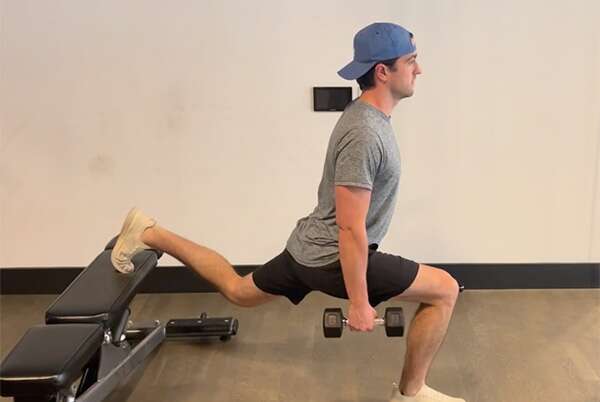Return to Sport following ACL Reconstruction Surgery
Returning to competitive athletics or recreational activities after an ACL reconstruction is a complex process for both patients and orthopaedic sports medicine surgeons. Arthroscopic anterior cruciate ligament (ACL) reconstruction utilizing a graft from a donor (allograft) or another part of a patient’s own body (autograft) is the gold standard for management of patients with complete tears to the ACL. Below we explore some of the considerations in allowing return to sport/activity and the rehab process following surgical reconstruction of the ACL.

Return to Sports Considerations
Return to sport/activity after ACL reconstruction continues to be a complex topic that has gained a tremendous amount of research interest. Studies have shown that returning patients to activity involves accounting for time from injury/surgery, functional movement testing, therapy progression, gender differences, sport-specific differences, and psychological factors.

It has been reported that as low as 5.6% of patients who met all the return to sport criteria and had appropriate therapy progression re-injured the same knee whereas 37.5% those who did not meet the criteria reinjured their knee. In regards to sport-specific outcomes, returning to cutting/pivoting activities after ACL reconstruction should not be allowed unsupervised until at least 6 months. Patients who are at higher risk for re-rupture of the ACL graft, including those under 20 years old and female athletes, are usually allowed to return to sports closer to 9 months given the prevalence of re-injury rates in these patient populations. Once adequate physical therapy and sport specific movement progression has been attained (see therapy protocol below), the goal is to allow an athlete to maintain a high level of activity without swelling, knee pain, or psychological worry of re-injury.
Some of the available ways to determine if patients are ready to return to their pre-injury activity level are through clinical tests such as the vertical hop test, lateral hop test, and jump test. All of these tests are performed at multiple times points during the recovery process. Additionally, specialty sport performance centers, including Midwest Orthopaedics at Rush, offers a 3-Dimensional gait laboratory that can evaluate the biomechanics of the knee and address movement issues that result in increased loading on the knee joint. Furthermore, each clinic visit after surgery allows Dr. Chahla to assess strength testing, presence/absence of thigh atrophy, and range of motion which are all critical components to understanding therapy progression and readiness to return to sport after surgery.
Another component of returning to sport/activity after ACL reconstruction is addressing psychological readiness. It has been reported in the literature that some of the main reasons athletes were not able to return to their level or activity is not trusting the knee, poor knee function/pain, and concern for another injury occurring. An assessment of a patient’s cognitive concerns regarding therapy and progression is important early on to maximize the ability to return to desired activity level.
Rehabilitation Protocol
Immediately after surgery, patients should wear their brace completely extended at all times (including sleeping) unless in therapy or otherwise instructed after the first post-operative visit. Icing is very important in the initial post-operative period to address swelling and pain and should be used for 30-45 minutes every 2 hours until the first post-operative appointment in clinic. Additionally, elevating the leg and rest are critical to maximize healing in the immediate time after surgery.
During the first two weeks after ACL reconstruction surgery, patients will wear the brace locked at 0° for ambulation and sleeping. During this time range of motion of the knee will be focused from 0-90° of flexion with emphasis on full extension of the knee. Straight leg raises with the knee brace locked at 0°, ankle pumps, and quadriceps sets are also focused on during this timeframe.
From 2-6 weeks after surgery, the brace will be unlocked when quadriceps strength is determined to be adequate, and the brace can be discontinued if good quadriceps control is seen around 4 weeks after surgery. Range of motion of the knee now emphasizes flexing the knee from 0-125° and active knee extension from 40°. Mini squats and leg press under the supervision of a physical therapist are also introduced during at this time to target both quadriceps and hamstring strengthening and control of the knee.
At 6-14 weeks post-operatively, a progressive squat and leg press program is introduced. This timeframe is also when agility exercises and retrograde treadmill walking are implemented into the therapy protocol. From 14-22 weeks, forward running on a treadmill is begun once 8-inch step down is adequate. Sport specific agility activities (soccer, lacrosse, etc.) are introduced to allow the knee to become re-familiarized with these more complex lateral movements. Strengthening of the quadriceps and hamstring is continued throughout this entire rehab process and use of an advanced plyometric program is started after 22 weeks post-operatively.
When you are in need of an orthopedic knee surgeon, schedule a consultation with Dr. Jorge Chahla. Dr. Chahla is a nationally renowned, award-winning, fellowship-trained, and board-certified orthopedic surgeon. Dr. Chahla has orthopedic clinics in Chicago, Naperville, Oak Brook, and Munster Indiana.
At a Glance
Dr. Jorge Chahla
- Triple fellowship-trained sports medicine surgeon
- Performs over 500 surgeries per year
- Assistant professor of orthopedic surgery at Rush University
- Learn more


